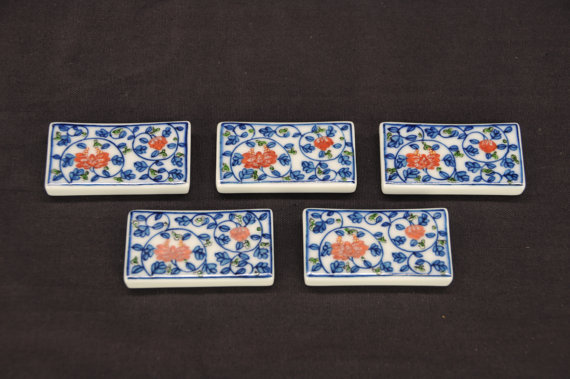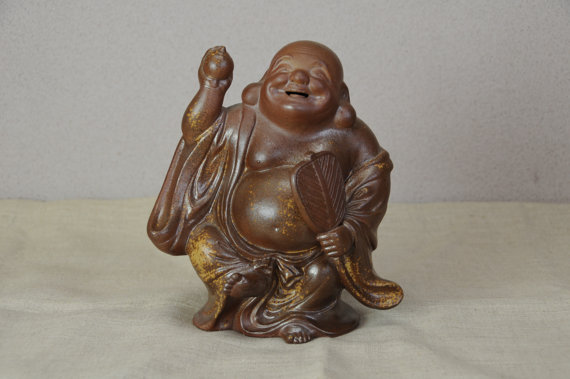Japanese Potteries(Explanations to the technical terms of ceramics No.13)
There are various technical words on potteries. Here are some of those, for which I'd like to give you some remarks.
Hashioki (Chopstick Rest)
In Japan where people use chopsticks every time having a meal, Hashioki is an essential item. There is no specific shape or material for Hashioki. As long as it works to have chopsticks, or a folk or a spoon, laid on it, whatever is fine for the rest.
For example, as there are four seasons in Japan, it will be good to have a sense of seasons on the table by Hashioki with flowers such as cherry blossoms, sunflowers, maple leaves and camellias, or with something seasonal like the red and white, Mount Fuji or battledores for new year days, Oni (ogres) or beans for the day of Setsubun (the day before the beginning of spring), or traditional hina dolls, Sensu (folding fans), or three-color rice cakes for the day of Hinamatsuri (the girls Efestival day in March). The designs of vegetables or fishes of the month may be interesting, too. In the tea ceremonies, they often choose a motif of Hashioki according to the twenty four seasonal turning points of the old Japanese calendar. Like this, you can now imagine a number of varieties in the Hashioki selections.
Some people collect many Hashioki, in a single motif, that are made of various materials. It must be a good fun to have collection in a theme of whatever you like such as dogs and cats if you are a pet lover, or maybe cars, music instruments, etc. Or some people may usually use an only favorite item that is in a simple plain design.
Mamezara (a small plate for spices, etc.) can be used also in place of Hashioki. Mamezara is a small dish, about 5 cm in size, which is also called Tesiozara (a handy salt plate) from its purpose though it is good not only for salt but also for other spices. One in the square shape with the deeper edge will be fine for chopsticks not to roll down.
You can fold a short letter beautifully and make Hashioki, asking your guest to read it after meal. It’s nice when entertaining your precious guest or preparing dinner for your boyfriend, isn’t it?
You can purchase the products. Click an item to view its detail at Marketplace.
Hotei Eone of the Seven Gods of Good Luck (Ornaments)
Well known with big stomach, big sack and bright smile is Hotei, who is a monk that actually existed in China. He attracts widespread popularity now as God of harmony, happiness and economic fortune, along with some folk stories concerning Hotei.
Hotei had lived his life receiving offerings from various people because he was a Buddhist monk. It is said that all the household things were in the big sack as well as something offered by people. Keeping this style, he traveled around various places. He was not just hanging out here and there, but he told people’s fortunes if so requested. And believe it or not, all the fortunes he told had come true. As people gradually knew that and the rumor saying that Hotei would come from future had spread over.
He loved to compose poems on his journey, many of which remain in the present. Most of his poems are on the motif of a Buddhist saint called ‘Miroku-Bosatsu E(or Maitreya) that is a future Buddha, therefore, the widely-spread story that Hotei who could tell the future had to be the incarnation of Miroku-Bosatsu was the origin of what Hotei currently looks like
You can fold a short letter beautifully and make Hashioki, asking your guest to read it after meal. It’s nice when entertaining your precious guest or preparing dinner for your boyfriend, isn’t it?
You can purchase the products. Click an item to view its detail at Marketplace.


